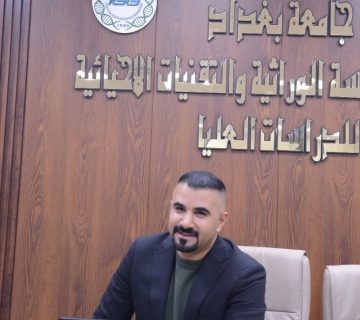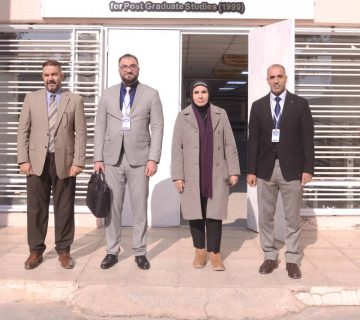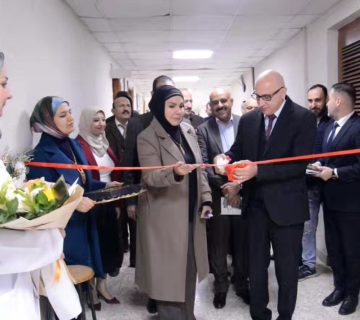The Quality Assurance Unit at the Institute of Genetic Engineering and Biotechnology for Postgraduate Studies/University of Baghdad held a workshop entitled “Safety Guide and Warning and Indicative Signs in Educational Laboratories,” presented by the unit’s official, Professor Dr. Bushra Jassim Muhammad, and the assistant teacher, Taiba Fares. A number of professors, employees and students of the institute participated in the workshop.
The workshop aimed to introduce the importance of posters placed inside educational laboratories, as well as their role in guiding researchers and workers there.
The workshop showed that laboratories are among the most dangerous work environments, as two million deaths have been recorded annually, which occur as a result of injuries and diseases related to the work environment all over the world, based on statistics available at the International Labor Organization. It also recorded $1.250 billion in economic costs resulting from losses, lost working hours, production interruptions, and medical expenses.
The workshop provided examples of the dangers that may occur inside laboratories, including fires, drinking or swallowing toxic substances, continuous exposure to small doses of toxic substances that have harmful effects in the long term, exposure to factors that cause infectious diseases caused by bacteria, viruses and parasites, and infection with wounds.
During the workshop, the most important reasons that lead to injuries were presented, which are lack of knowledge, haste in action, confusion, negligence, and wrong judgment on things.
The workshop also recommended general biosafety procedures, including that all materials generated by the human body, such as blood, other fluids, and tissues, should be treated as potential sources of transmission of infection. Use mechanical pipettes, not oral pipettes, when handling all liquids in the laboratory.
It also recommended avoiding procedures that result in spray dispersal, such as operations to inactivate bacteria using sound waves, mixing or washing operations, etc. in open laboratories, as well as performing the centrifugation process in closed tubes inside a tightly sealed centrifuge.

Comments are disabled.








